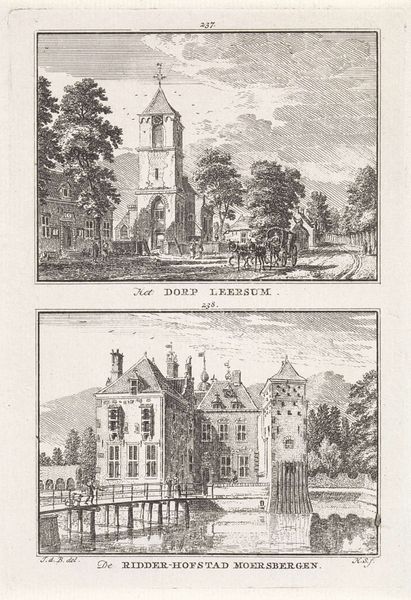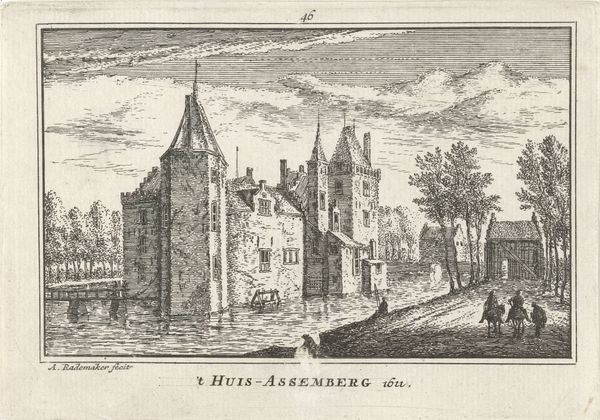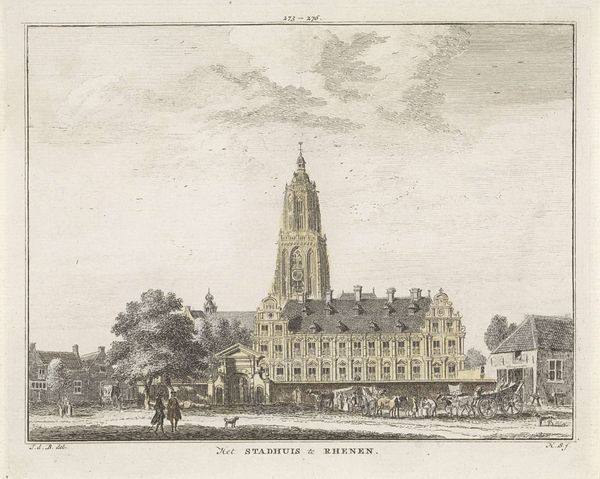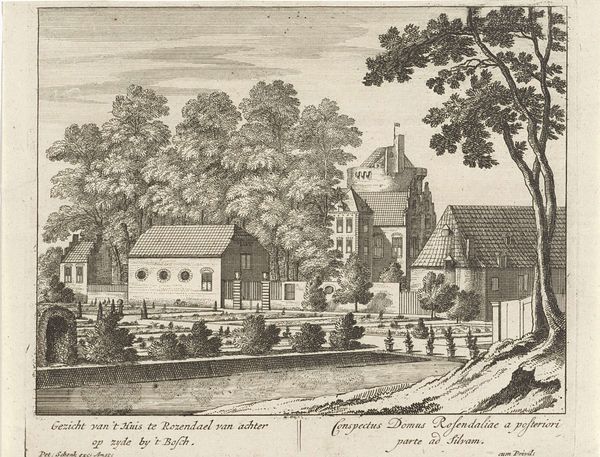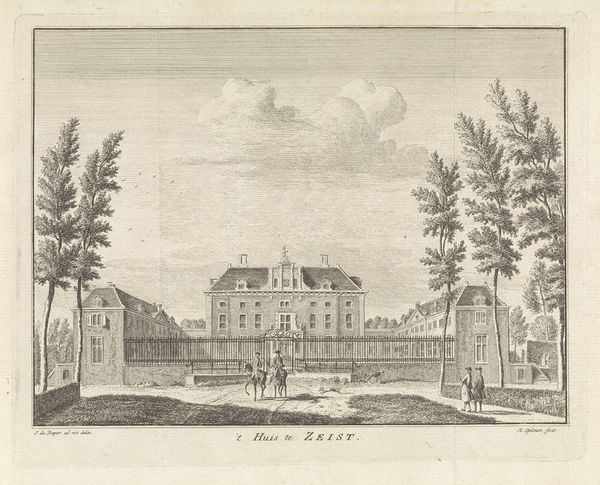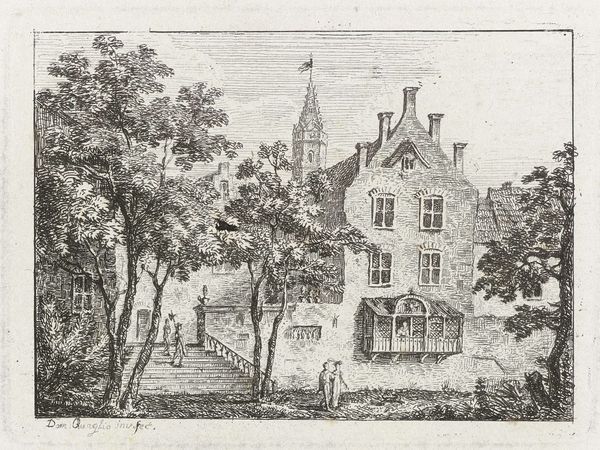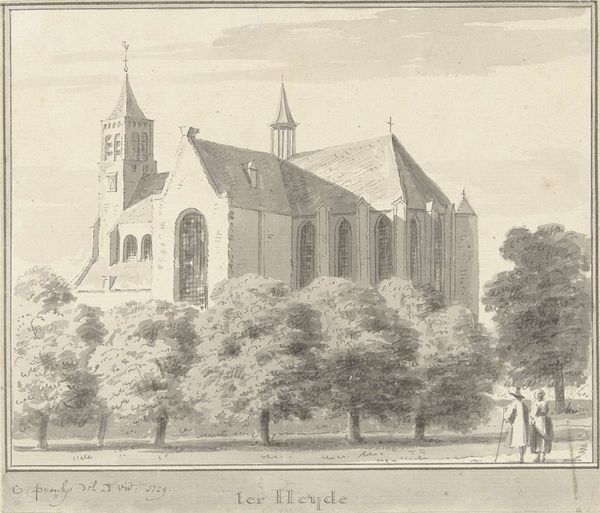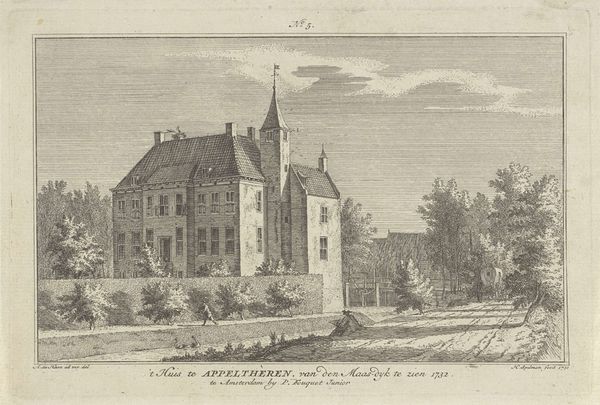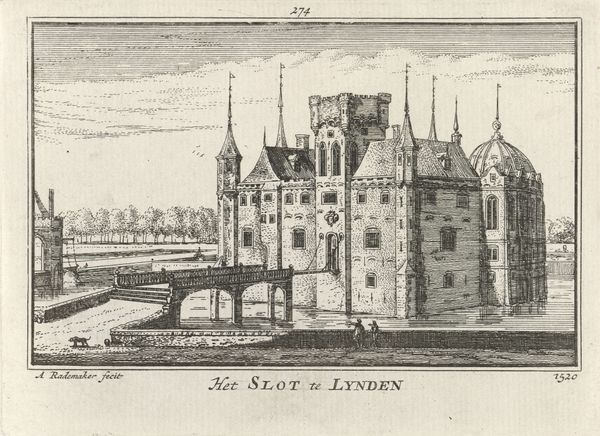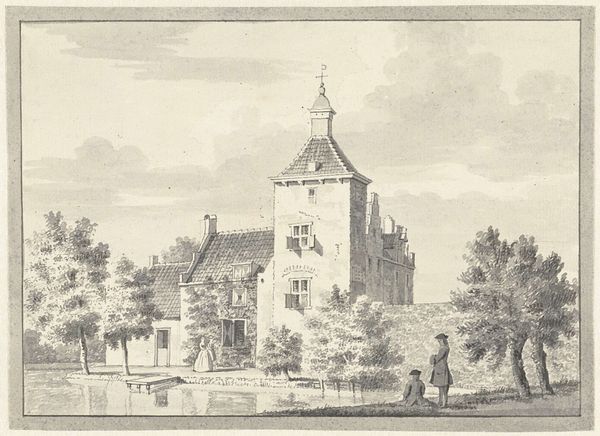
print, engraving
#
baroque
# print
#
landscape
#
engraving
Dimensions: height 80 mm, width 115 mm
Copyright: Rijks Museum: Open Domain
Curator: Here we have Abraham Rademaker's "Gezicht op Kasteel Lockhorst," dating from 1727 to 1733. It's an engraving, currently held at the Rijksmuseum. What's your initial impression? Editor: Austere, definitely. The stark lines and monochromatic palette lend it a certain gravity. It feels quite solid, immutable, like an unshakeable monument. Curator: Rademaker's choice of subject is very telling, especially when you consider the sociopolitical function of castles and large estates during this period. They were powerful symbols of authority, often representing control over both the land and its inhabitants. The surrounding landscape wasn't simply a backdrop but also visually declared privilege, dominance. Editor: Absolutely. And notice how the strong horizontals of the architecture, the way they are repeated in the reflection in the water create a powerful sense of balance, almost stasis. It reinforces the impression of solidity and permanence that I observed earlier. Curator: Indeed. Furthermore, we might consider Rademaker's positionality as an artist creating landscape prints. He wasn't just passively representing the castle; he was actively participating in the production of its image and thus contributing to the overall power dynamic. It’s through circulation as printed matter that allowed for ideas about the estate system to travel from community to community. Editor: Looking at the texture, you get such variation created with subtle manipulation of the lines – from the crisp detailing of the brickwork to the soft suggestion of the water’s surface. The composition is a testament to Rademaker’s control over his medium. Curator: And control is key to our understanding of this piece! The families that owned these buildings, they aimed to assert an unshakable control across every element of their existence. So it’s vital for us to not detach questions of style and texture away from concerns of how art and history co-inform one another. Editor: A very valid point. The building isn't just a building, or just formal technique on display, but is bound up with larger, historically-contingent notions of social hierarchies. Thinking about that tension enhances my experience of it significantly. Curator: Likewise! Considering both the intrinsic form of the artwork and its broader context gives rise to a layered comprehension of its role in our shared past.
Comments
No comments
Be the first to comment and join the conversation on the ultimate creative platform.
